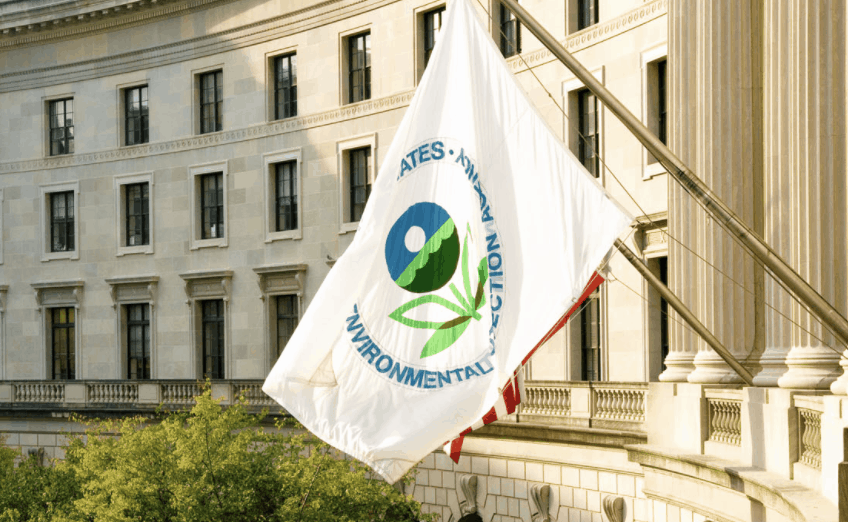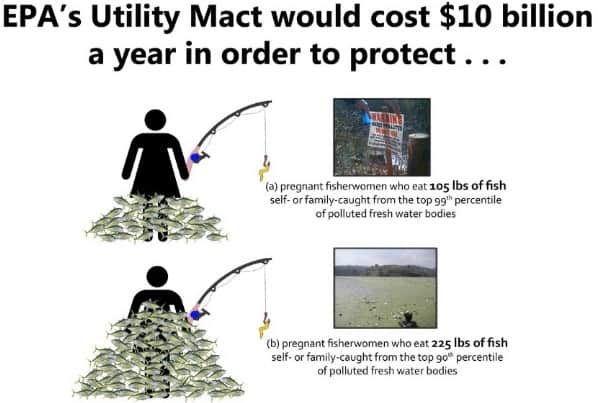EPA Mercury Rule an Inappropriate Exercise of Regulatory Power

 On Wednesday, I submitted comments on the Environmental Protection Agency’s (EPA) proposal to rescind its justification for the 2012 Mercury Air Toxics Standards (MATS) rule. MATS established first-ever maximum achievable control technology (MACT) standards for mercury and other hazardous air pollutant (HAP) emissions from coal- and oil-fueled power plants. MATS is among the most expensive regulations in the history of the Clean Air Act. The Edison Electric Institute, which supports the rule, estimates that since 2012, owners and operators of coal and oil power plants have spent more than $18 billion to comply.
On Wednesday, I submitted comments on the Environmental Protection Agency’s (EPA) proposal to rescind its justification for the 2012 Mercury Air Toxics Standards (MATS) rule. MATS established first-ever maximum achievable control technology (MACT) standards for mercury and other hazardous air pollutant (HAP) emissions from coal- and oil-fueled power plants. MATS is among the most expensive regulations in the history of the Clean Air Act. The Edison Electric Institute, which supports the rule, estimates that since 2012, owners and operators of coal and oil power plants have spent more than $18 billion to comply.
The EPA is not proposing to remove power plants from the list of stationary sources subject to MACT standards, nor to rescind the MATS rule or its emission standards. Rather, the agency proposes to revoke its determination, first made in 2000 and later affirmed in 2012 and 2016, that MACT regulation of power plants is “appropriate and necessary.” The EPA now believes such regulation is not “appropriate” because the costs are out of all proportion to the benefits.
The MATS rule itself estimated that, in 2016, industry would have to spend $9.6 billion to comply; yet the required reductions in hazardous air pollutants would provide only $4 million to $6 million in quantifiable health benefits (77 FR 9306). Costs exceed benefits by 1,600 to 1 or even 2,400 to 1. That hardly seems “appropriate.” But in 2012, the EPA took the position that it need not and should not consider costs when determining whether MACT regulation of power plants is appropriate (77 FR 9327).
Industry petitioners challenged the EPA’s refusal to consider costs. In White Stallion Energy Center v. EPA (2014), the D.C. Circuit Court of Appeals upheld MATS by 2-1 and affirmed that Section 112(n)(1)(A) does not require the agency to consider costs. However, then-Judge Brett Kavanaugh’s powerful dissent, arguing that EPA’s “cost-blind approach” is unreasonable, helped persuade the Supreme Court to review the case.
In Michigan v. EPA (2015), the Supreme Court ruled that the EPA had “strayed far beyond [the] bounds” of “reasonable interpretation” when it excluded cost considerations from the appropriate-and-necessary finding. Indeed, the court stated: “One would not say that it is even rational, never mind ‘appropriate,’ to impose billions of dollars in economic costs in return for a few dollars in health or environmental benefits. . . . No regulation is ‘appropriate’ if it does significantly more harm than good.”
In response to Michigan, the EPA in 2016 finalized a supplemental finding that the MATS rule’s cost are “reasonable” in two different ways. First, the costs did not impair the electric power sector’s economic viability and would not significantly increase consumer energy prices. Second, the rule’s total benefits exceed costs by 3-to-1 or even 9-to-1. How so? The finding estimated that MATS could provide $37 billion to $90 billion in collateral health benefits from coincidental reductions in non-hazardous air pollutants, specifically sulfur dioxide (SO2), nitrogen oxides (NOX), and fine particulate matter (PM2.5), which are regulated as criteria air pollutants under other parts of the Clean Air Act, notably the National Ambient Air Quality Standards (NAAQS) and acid rain programs.
EPA’s current proceeding is a critique of the supplemental finding. The EPA argues that the power-sector economic viability test does not answer the Supreme Court’s question of whether the benefits of the MATS rule are worth the cost. The EPA further argues that Congress did not intend for criteria pollutant co-benefits to be used to determine the appropriateness of regulating power plant HAP emissions under Section 112. My comment letter concurs with that assessment.
Two questions leap to mind. First, if the EPA believes MATS lacks a valid statutory justification, why does the agency propose to leave it in place? Second, if the current proceeding will not accomplish any actual deregulation, what is the point?
The EPA’s motivation may in part be “philosophical.” Revoking the “appropriate” determination will uphold the law as interpreted by the Supreme Court in Michigan and repudiate the agency’s previous use of the Clean Air Act as a weapon in the war on coal.
However, there may also be a more “practical” objective. The EPA invites comment on whether, having concluded that MATS is inappropriate, it should also rescind the rule or its regulatory standards, remove power plants from the list of sources regulated under Section 112, or some combination thereof.
My comment letter develops the following points:
- The MATS rule is an inappropriate exercise of regulatory power under Section 112(n)(1)(A) of the Clean Air Act because the direct benefits of the required HAP reductions do not begin to justify the costs.
- The EPA may remove power plants from the list of Section 112-regulated sources only if it determines that the most exposed individual’s cancer risk does not exceed 1-in-a-million.
- Since the EPA is proposing to determine that power plant HAP emissions subject the most exposed individual to a 9-in-1 million cancer risk, the agency may not delete power plants from the list.
- However, once the EPA has rescinded the MATS rule’s statutory justification, it should also rescind MATS itself or its standards.
- Leaving MATS or its standards in place would make the EPA’s Clean Power Plan replacement rule unlawful under the plain text of the statute and New Jersey v. EPA. Section 111(d) of the Clean Air Act, the purported authority for the replacement rule, specifically excludes from its regulatory purview source categories already regulated under Section 112.
- The MATS rule is even more unreasonable than EPA’s current analysis suggests. The rule’s direct HAP reduction benefits are illusory. Its indirect PM2.5 co-benefits derive from an illegitimate methodology and conflict with significant epidemiological and toxicological evidence.
If you have read this far, you deserve a humor break. My former CEI colleague William Yeatman created a cartoon to illustrate the MATS rule’s irrationality. I repost it below along with his brief explanation:

Yeatman commented:
That’s no joke. The actual justification for the Utility MACT, one of the most expensive and consequential regulations of all time, is to protect a supposed population of pregnant subsistence fisherwomen, who consume hundreds of pounds of self-caught fish from exclusively the most polluted inland bodies of fresh water. . . . Notably, EPA never identified a single member of this putative population of super-angler, pregnant women, who feed exclusively off self-caught fish from polluted bodies of water, despite the abundance of warnings, in multiple languages, posted about the river or lake where these amazing ladies do their sustenance fishing. Rather, they are modeled to exist.